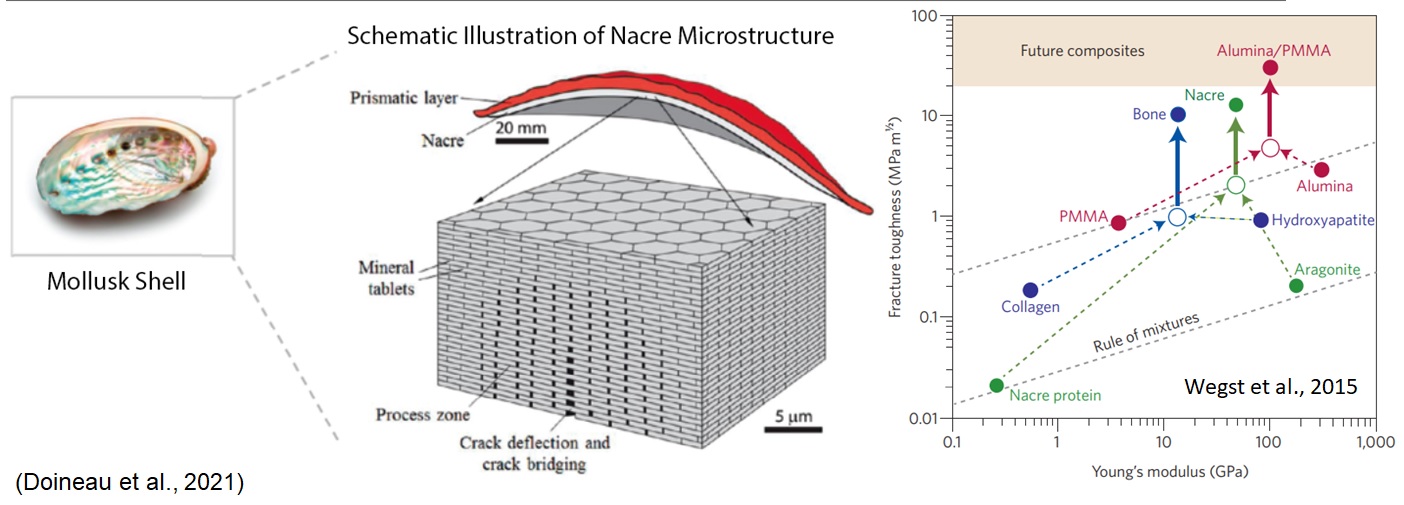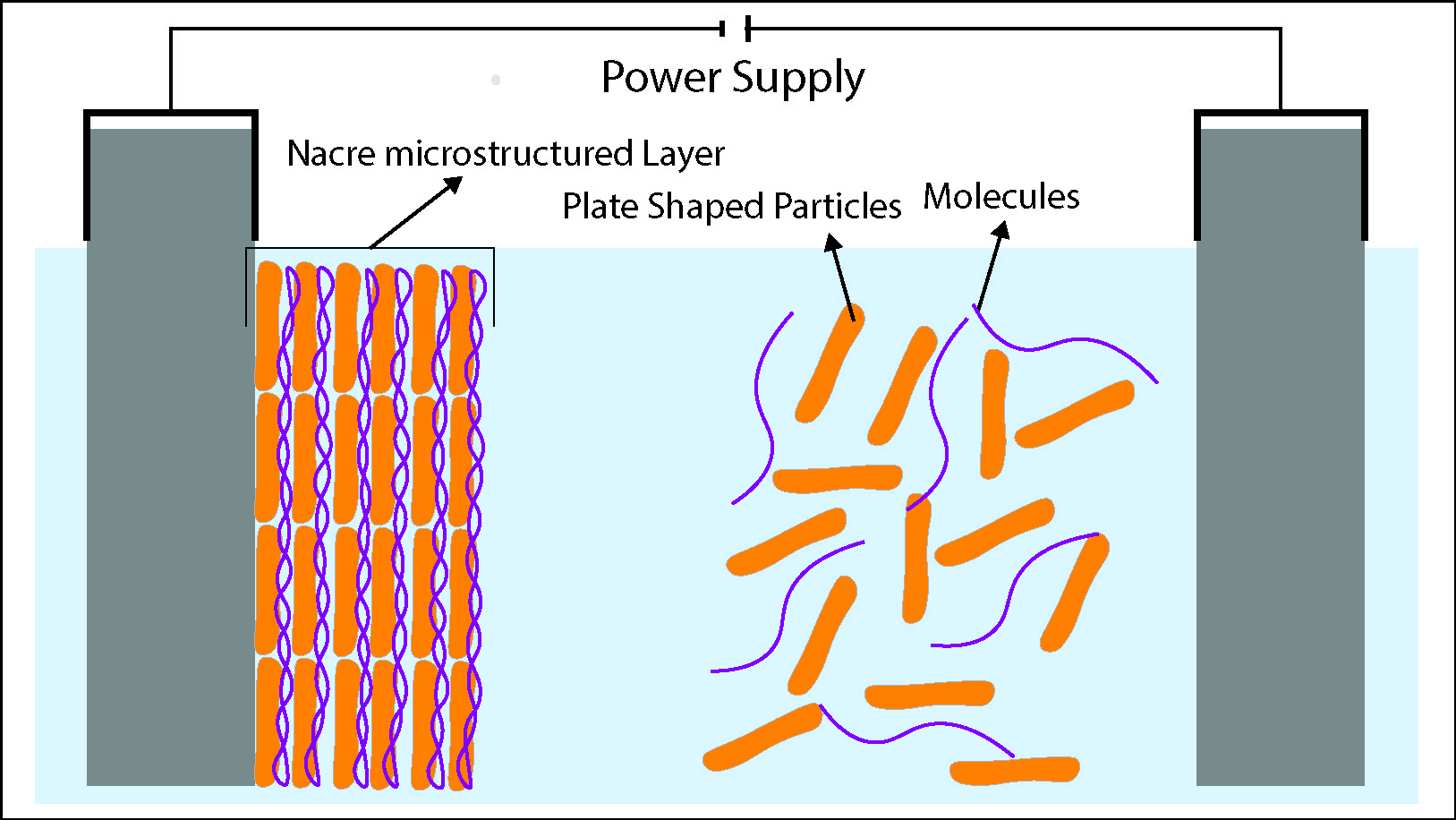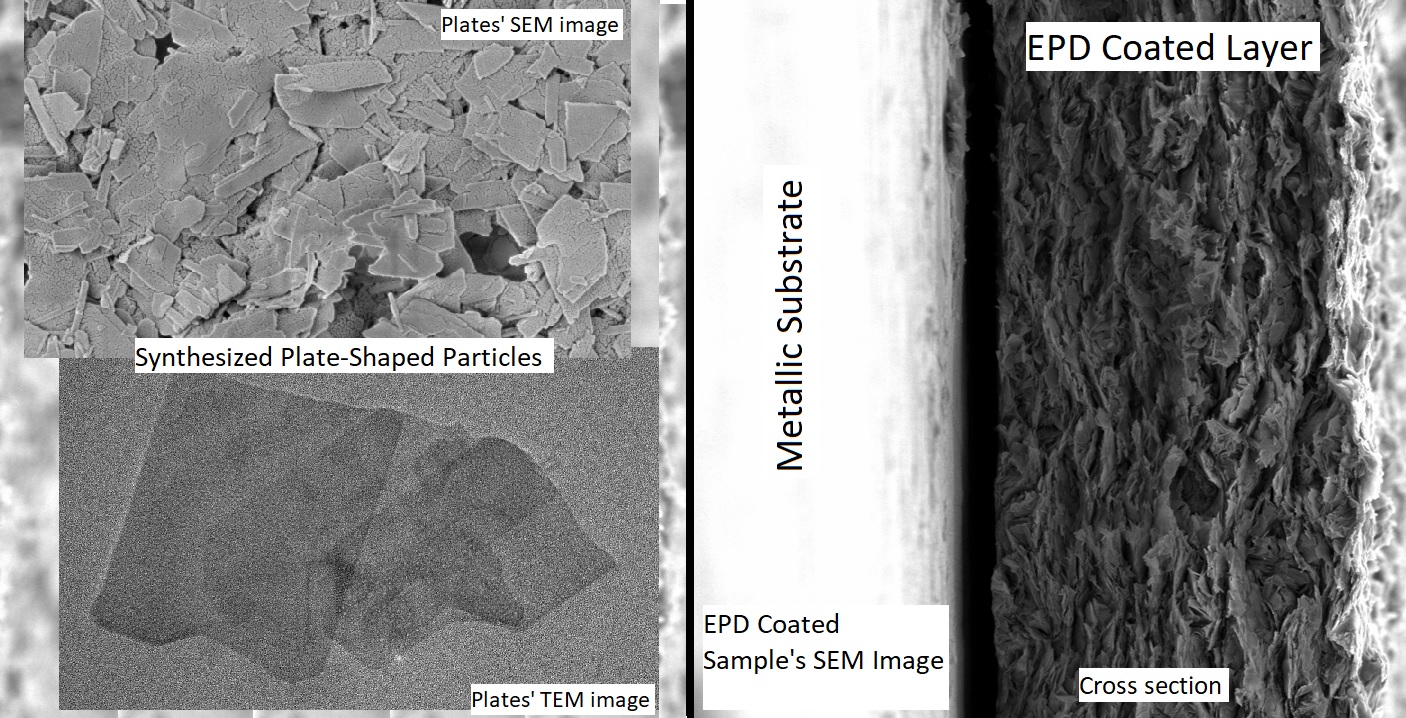New trends in design of material's microstructure
| The organisms, undergoing perpetual change over many years, produce individual tailored microstructures to adapt better to nature by exerting the natural mineral sources in the best manner. The most striking example in this context is the nacre structure found in the mollusk shell. By its unique hierarchy, its mechanical properties are preceded many times more than those of its constituents. Besides, this mechanical performance is far from the value calculated in the mixture rule of composites. By inspiring from the nacre hierarchy, BIO-TESLAB prepares hybrid layers. Please find below the related literature information and our studies on this topic. |
 |
| The brick-and-mortar microstructure and the nacre's outstanding mechanical properties are shown in the image above. The images adapted from Doineau et al., 2021 (DOI:10.3390/polym13050804), Wegst et al., 2015 (DOI: 10.1038/nmat4089) |
 |
| The schematic of the fabrication process of nacre-like coatings by EPD. This process makes it possible to produce that type of hybrid coating rapidly. Moreover, the weight ratio of polymer/ceramics in the layer and the deposition thickness can be controlled in this method, in which the polymer molecules, together with plate-shaped particles, are deposited by an electrical field on the substrates. |
Nacre-Like Coatings by BIO-TESLAB
 |
The SEM and TEM images of plate-shaped bioceramic nanoparticles (left) and the deposited nacre-like hybrid polymer composite layer fabricated with EPD (right). We, the BIO-TESLAB team, first synthesized sheet-like bioceramic nanoparticles, which grow as rods under normal conditions. Then we successfully deposited a layer with a hierarchical microstructure from a suspension including these particles, together with polymer biomolecules on the substrate. |